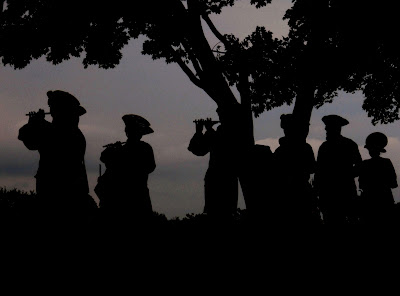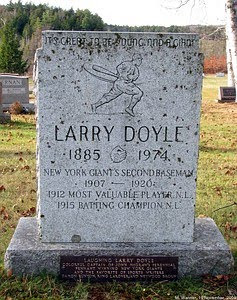 Hungry Bear Publishing recently released its sixth volume in the “Adirondack Attic” book series, highlighting dozens of artifacts from the Adirondack Museum in Blue Mountain Lake.
Hungry Bear Publishing recently released its sixth volume in the “Adirondack Attic” book series, highlighting dozens of artifacts from the Adirondack Museum in Blue Mountain Lake.
Author Andy Flynn, of Saranac Lake, tells 53 more stories about the museum’s collection in New York State’s Mountain Heritage: Adirondack Attic, Volume 6, bringing the story count to more than 300 for the six-volume series that began in 2004. Stories, and artifacts, come from all over the Adirondack region.
“Each story is special unto itself- however, taken as a whole, this series gives us the big picture,” Flynn told the Almanack. “Thanks to these artifacts, we now have a unique perspective on the Adirondack experiment and a better understanding of the 6-million-acre Adirondack Park, its people and communities, and how life has changed here over the past 300 years.”
Stories from Adirondack Attic 6 come from the following communities: Au Sable Forks, Bangor, Blue Mountain Lake, Brantingham Lake, Canton, Chestertown, Cranberry Lake, Dickinson Center, Elizabethtown, Hague, Johnsburg, Lake George, Lake Placid, Long Lake, Loon Lake, Lyon Mountain, Mohawk, Newcomb, North River, Northville, Paul Smiths, Port Henry, Raquette Lake, Saranac Lake, Ticonderoga, Tupper Lake, Warrensburg and Wilmington.
Flynn created the Adirondack Attic History Project to “promote the heritage of the Adirondack Park to residents and visitors through publications and programs.” As the owner/operator of Hungry Bear Publishing, he works with curators at the Adirondack Museum and other historical associations and museums in the region to tell human-interest stories about their artifact collections.
Flynn’s “Adirondack Attic” column ran weekly in several northern New York newspapers from 2003 to 2009. The stories in Adirondack Attic 6 represent the columns from 2008. Each volume includes columns from a specific year- for example, Adirondack Attic 1 featured columns from 2003, the first year of the Adirondack Attic History Project.
In April 2010, North Country Public Radio began running Flynn’s new Adirondack Attic Radio Series, sponsored by the Adirondack Museum and singer/songwriter Dan Berggren. It airs the first Tuesday of the month during the Eight O’Clock Hour with Todd Moe. For each program, Flynn features a different artifact from the collection of a museum in the Adirondack North Country Region. He uses the Adirondack Museum as his “History Headquarters” but also visits other museums to track down the objects people have made, used and left behind.
In 2008, Andy Flynn was awarded a Certificate of Commendation from the Upstate History Alliance for the Adirondack Attic History Project. He has since presented programs on his work with the Adirondack Museum to scholars at the New York State Archives Conference (2008), Association of Public Historians of New York State (2008) and Conference on New York State History (2009).
Flynn also publishes the Meet the Town community guide series with booklets for Saranac Lake, Lake Placid/Wilmington, Canton, Potsdam, Tupper Lake/Long Lake/Newcomb and the Au Sable Valley. From 2001 to 2009, he was employed as the Senior Public Information Specialist at the Adirondack Park Agency Visitor Interpretive Center in Paul Smiths.
Flynn is an award-winning journalist, garnering merits of excellence from the National Newspaper Association, New York Newspaper Publishers Association and the New York Press Association. While the staff writer at the Lake Placid News, he was named the 1996 NYPA Writer of the Year for weekly New York state newspapers with circulations under 10,000. Before joining the VIC staff, he was a writer and editor for the Adirondack Daily Enterprise in Saranac Lake and the Lake Placid News, a correspondent for the Plattsburgh Press-Republican, an announcer for WNBZ 1240-AM in Saranac Lake, and a general assignment news reporter and radio documentary producer for North Country Public Radio in Canton. He is a graduate of the SUNY College at Fredonia (1991) and the Tupper Lake High School (1987).
For more information about the Adirondack Attic book series and radio program, call (518) 891-5559 or visit online at www.hungrybearpublishing.com.
ADIRONDACK ATTIC 6 TABLE OF CONTENTS
1: Delaware & Hudson Railroad guides
2: Camp Santanoni Gate Lodge rendering (Newcomb)
3: Long Lake fire truck
4: Snowbug and Luvbug snow machines
5: Lake Placid bobsledding cassette tape (Saranac Lake, Lake Placid)
6: Mystery of Ironshoes, the bobsled (Lake Placid, Port Henry, Lyon Mountain, Elizabethtown)
7: Nehasane Park wagon (Long Lake)
8: Republic Steel miner’s helmet (Port Henry)
9: J. & J. Rogers Company safe (Au Sable Forks)
10: Paul Smith’s hotel stagecoach photo
11: Willcox & Gibbs sewing machine (Mohawk)
12: Bonnie Belle Farm ensilage cutter (Chestertown)
13: Maple sugaring sledge (Dickinson enter, North River)
14: Acme Leader cooking stove (Warrensburg)
15: Steamer Vermont III menu (Lake Champlain, Lake Placid, Loon Lake)
16: Au Sable Forks archery set
17: Bear Pond Preserve posted sign (Raquette Lake)
18: Fire tower string map (Warrensburg, Lake George)
19: Whiteface Mt. Ski Center brochures
20: Hendrik Van Loon’s Wide World Game
21: “Uncle Mart” Moody pocket watch (Tupper Lake)
22: Civil War memorial poster (Warrensburg)
23: “Assaulted by Mosquitoes” photo
24: Bug dope in the Adirondack woods
25: Sunset Cottage (Forked Lake)
26: Frederic Remington painting (Canton, Cranberry Lake)
27: A Pleasant Day at Lake George painting
28: Picturesque America book
29: Swizzle sticks (Ticonderoga, Port Henry, Hague)
30: E.R. Wallace guidebooks
31: Long Lake church souvenir tray
32: In Nature’s Laboratory book
33: Clock Golf lawn game
34: Altamont Milk Company cooler (Tupper Lake)
35: Blue Mountain House artist’s cottage
36: North River crazy quilt
37: 18th century clay pipe fragment (Blue Mountain Lake)
38: Raquette Lake sectional rowboat
39: Ticonderoga Indian Pageant booklet
40: Lake George souvenir china
41: Sacandaga Park souvenir china (Northville)
42: O.W.D. Corporation 5-cent token (Tupper Lake)
43: 1833 needlepoint sampler (Johnsburg)
44: Warrensburg hearse
45: Lake Placid violin
46: Mystery of the postal hand stamp (Bangor)
47: Dwight P. Church’s aerial camera (Canton)
48: Civilian Conservation Corps ring (Glens Falls/Hudson Falls)
49: Tupper Lake baby shoes
50: 1929 firemen’s convention ribbon (Saranac Lake)
51: Dr. William Seward Webb mailbag
52: Brantingham Lake rustic chair
53: Newcomb Snow Plow
Note: Books noticed on this site have been provided by the publishers.
 Discover the unexplained past at Fort Ticonderoga during evening Garrison Ghost Tours, Fridays and Saturdays, Oct. 22 and 23 and Oct. 29 and 30. The lantern-lit tours, offered from 7 p.m. until 9 p.m., will highlight Fort Ticonderoga’s haunted history and recount stories featured on Syfy Channel’s Ghost Hunters.
Discover the unexplained past at Fort Ticonderoga during evening Garrison Ghost Tours, Fridays and Saturdays, Oct. 22 and 23 and Oct. 29 and 30. The lantern-lit tours, offered from 7 p.m. until 9 p.m., will highlight Fort Ticonderoga’s haunted history and recount stories featured on Syfy Channel’s Ghost Hunters.



